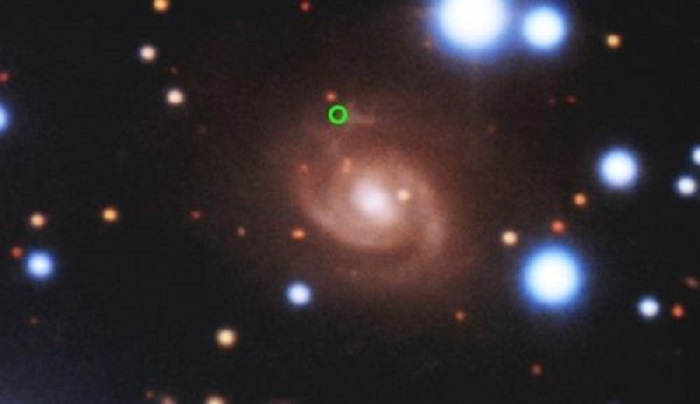Astronomers discover farthest radio burst
- October 22, 2023
- 0
Eight billion years ago, something happened in a distant galaxy that sent an incredibly powerful burst of radio waves into the universe. It finally reached Earth on June
Eight billion years ago, something happened in a distant galaxy that sent an incredibly powerful burst of radio waves into the universe. It finally reached Earth on June

Eight billion years ago, something happened in a distant galaxy that sent an incredibly powerful burst of radio waves into the universe. It finally reached Earth on June 10 last year, and although it took less than a thousandth of a second, a radio telescope in Australia managed to pick up the signal. This explosion in space was a Fast Radio Burst (FRB), a little-understood phenomenon first discovered in 2007.
Astronomers showed Thursday that this particular FRB is more powerful and comes from a much greater distance than any previously recorded, traveling eight billion light-years from a time when the universe was less than half its current age. What exactly causes FRBs has become one of astronomy’s greatest mysteries. It had previously been speculated that these might be radio communications from some aliens, especially due to the repetition of some of the signals.
But scientists believe the prime suspects are distant dead stars called magnetars, the most magnetic objects in the universe. Astrophysicist Ryan Shannon of Australia’s Swinburne University told AFP it was “surprising” that the ASKAP radio telescope in Western Australia detected the radio emission last year.
“We were lucky enough to observe that little dot in the sky for a millisecond, after the eight billion years it took for the pulse to catch it,” said Shannon, co-author of the study describing the finding in the journal. Science. He added that the FRB easily beat the previous record holder, which was about five billion light years away.
The pulse was so powerful that in less than a millisecond it released as much energy as the Sun radiates in 30 years. Hundreds of thousands of FRBs could shine in the sky every day, Shannon said. But around a thousand have been identified so far, and scientists have only been able to determine where 50 of them came from, which is crucial to understanding them.
To find out where the latest radio burst, called FRB 20220610A, came from, researchers turned to the Very Large Telescope in Chile. The signal was found to come from a particularly complex galaxy that may have merged with one or two other galaxies, creating this strange magnetar.
Shannon emphasized that this was just the team’s “best hunch.”
FRBs have been found to come from unexpected places, including our own Milky Way galaxy, so “the jury is still out” on what causes them, he says. In addition to trying to unravel the mysteries of FRBs, scientists hope to use them as a tool to shed light on another mystery of the universe.
Only five percent of the universe consists of the ordinary matter that makes up everything you see, while the rest is thought to consist of dark matter and dark energy, which are poorly understood. But when astronomers counted all the stars and galaxies in the universe, more than half of the five percent of normal matter was “missing,” Shannon said.
Scientists believe this missing matter is spread in thin threads connecting galaxies called the cosmic web, but it is so dispersed that telescopes cannot see it.
This is where fast radio bursts arise.
Shannon said that “all the gas they pass through has their signature.”
Some wavelengths of FRBs slow down slightly as they move through this material, giving scientists a chance to measure this. This could allow them to determine how much matter is in the cosmic web and therefore the total weight of the universe. As for the record-breaking FRB, Shannon said the team detected signals of “extra material” that the burst passed through during its journey through the universe.
But he added that hundreds more FRBs would likely need to be observed to use this information to accurately measure the weight of the universe. Astronomers hope this will happen relatively quickly with much more advanced radio telescopes due to be launched soon. Caltech Institute astrophysicist Liam Connor, who was not involved in the research, told AFP that future radio telescopes would find tens of thousands of FRBs, allowing scientists to weigh the whole matter “over cosmic ages”. Source
Source: Port Altele
As an experienced journalist and author, Mary has been reporting on the latest news and trends for over 5 years. With a passion for uncovering the stories behind the headlines, Mary has earned a reputation as a trusted voice in the world of journalism. Her writing style is insightful, engaging and thought-provoking, as she takes a deep dive into the most pressing issues of our time.